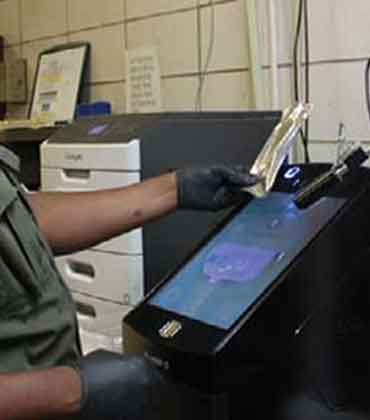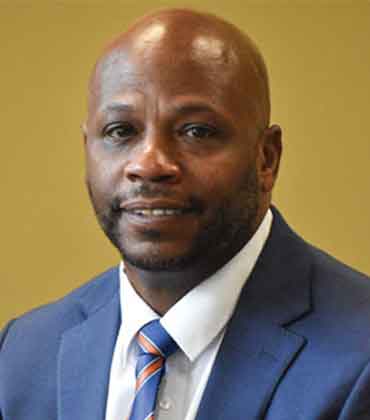THANK YOU FOR SUBSCRIBING
At GovDollars Consulting, public budgeting isn’t just a challenge to solve; it’s a lived experience. Founded by professionals who spent years inside local government budget and finance offices, the company brings a practitioner’s perspective to technology. Its flagship cloud-based platform, the Lomali Budget Suite, was designed for public entities, connecting operating, personnel, performance, and capital planning in one streamlined system that leads to a budgeting process that is clearer, more collaborative, and better aligned with community goals. What’s more, the Lomali Budget Book, GovDollars flagship product, helps public entities put together financial publications like the annual budget book, PAFR, and capital improvement plan. From Insider Experience to Purpose-Built Solutions The Lomali Budget Suite supports the entire budgeting cycle, from long-term strategies to annual operating budgets and capital improvement plans. By integrating with ERP, HR, and other data systems, it consolidates information into a single system with real-time updates. Budget and Finance teams, user departments, and executive leaders gain timely insights to guide informed decisions. Leah R. Patrick, President and Head of Product, shaped Lomali after working in the central budget offices of Travis County, Texas, the City of Raleigh, and Wake County, North Carolina. There, she experienced firsthand how spreadsheets and generic finance tools slowed progress and created gaps. Those inefficiencies became the blueprint for a purpose-built solution that replaces fragmented processes with an end-to-end budgeting platform. Unlike many providers who adapt private-sector tools for government use, GovDollars focuses solely on public entities. This dedicated approach makes Lomali uniquely suited to public finance, where operating costs, personnel, performance measures, and community priorities must all be connected. “Our application is really meant to fill all of those spaces in the budget process that other software leaves behind,” says Patrick. The software helps governments plan months before adopting an annual budget. Anearly start enables public entities to forecast obligations, weigh trade-offs, and set priorities well in advance, shifting financial management from reactive adjustments to proactive strategy. Every municipality operates within its own technological landscape. Some rely on spreadsheets and legacy systems, while others use advanced ERPs or other budget systems. Lomali bridges these differences by integrating seamlessly with multiple ERP systems, HR databases, and third-party applications. Nightly updates consolidate data, eliminate error-prone manual entry, and give teams a reliable “single source of truth.” The result is reduced time reconciling numbers and more time shaping strategies that strengthen communities. What’s more, the Lomali applications can be purchased a-la-carte, so even if you have a current budgeting system that meets some of your needs, Lomali’s applications can still help fill in the gaps.
Integrity, consistency and accountability are central to modern policing. Accreditation strengthens that foundation by defining clear policies, procedures and performance standards. Turning policies into practice often stretches departments thin. Each assessment requires hundreds of documents, precise alignment with rules and detailed proof of compliance. For many agencies, especially smaller ones, the process can feel overwhelming. Andretta Swift, founder and CEO of Badge 6, has experienced that challenge. A former police officer and accreditation manager, she knows how much time and effort compliance requires. When Connecticut became the first state to mandate accreditation for every department, she saw how difficult it was for agencies with limited staff and resources to keep up. Existing software did little to ease the burden, forcing departments into rigid systems that didn’t reflect the complexity of real policing. That experience led Swift to create Badge 6, a specialized platform to streamline and modernize police accreditation. Its mission is to simplify how agencies manage compliance, documentation and policy alignment, which is traditionally resource intensive and complex. By adapting to each department rather than forcing departments to adapt to software, Badge 6 reduces manual workload by as much as 90 percent. “By transforming accreditation from a paper chase into a practical, time-saving process, Badge 6 gives officers back the time to focus on strengthening operations, improving performance and serving their communities confidently,” says Swift. The system guides police departments step by step, checking each submission for accuracy and compliance. Every attachment, policy and proof has its place and communication between accreditation managers and assessors happens directly within the platform. This structure eliminates the back-and-forth of emailing documents and ensures nothing is misplaced. If a policy aligns with a standard, it can be uploaded into the module, where AI highlights the matching sections for review.
Government organizations at many levels (federal, state, local) generate, collect, share, and work with sensitive information that is controlled and needs to be protected from unauthorized disclosure. There are also rules, regulations, and processes that govern the release of such information in a “sanitized” form to the public. Examples include Freedom of Information Act (FOIA) requests, Health Insurance Portability and Accountability Act (HIPAA), legal court requests, Mandatory Declassification Reviews (MDR), etc. With growing volumes of data and stringent privacy regulations, secure and accurate redaction has become essential for organizations in law enforcement, government, healthcare, and legal services. Traditional manual tools often slow the redaction process, increasing the risk of errors and inefficiencies. redactX, founded by Joseph Santucci, is an AI-powered platform designed to automate redaction across a broad range of modalities: documents, videos, images, and audio files. Automation brings benefits at many levels: it reduces the amount of work and time needed to produce a redacted output file, it reduces the possibility of human errors, it supports consistency in what is being redacted across different workflows and activities, etc. Automation, however, can only be truly achieved if the software provides very high detection accuracies, and this is where the redactX software makes a huge leap for the industry. Breaking Obstacles with a Smarter Alternative Conventional redaction tools envision users interacting with a document or a video on a frame-by-frame or sentence-by-sentence basis marking manually what is to be redacted. The process is then repeated on every new file. Sometimes there are limitations on what type of source material can be processed (ex: only body-worn video from a specific camera type) or where the processing takes place (ex: the file must be uploaded to a vendor operated cloud), or how much material can be processed (ex: per-minute of audio file charges), or the scope of what the redaction tool covers (ex: different applications needed for pdf, video, audio, etc.), and so on. redactX flips the equation around. Users define redaction criteria, and the software implements these criteria to automatically generate a redacted output file. Criteria can be saved and reused to process batches of files or as part of automated tasks that occur on schedules for different types of documents. For example, a criteria might be “redact all faces in this folder of videos” or it might be “redact only these two faces and leave the rest visible in all the images, videos, or pdf documents at this location”. With a high degree of accuracy, the redactX software detects object, faces, text strings, entities, speech, etc. in many different file formats, and according to the criteria specified by the user. A few clicks of the mouse let users accomplish what used to take hours and days of work. Several different types of advanced AI technologies are used to accomplish this, including Computer Vision, Natural Language Processing, Speech Recognition, Machine Learning, etc. The application’s UI/workflow focuses user attention on areas that require that attention (drill-down capabilities, different views of the redaction data, reports, “one-click” error correction, etc.). The level of functionality provided is significant. For example, the software can detect/recognize, and therefore redact, concepts (we call these “entities”). Things like “dates”, “names”, “locations”, “events”, etc. are entities. In addition to an extensive built-in list of entities, the software lets users create their own definitions (“zeroshot” entity recognition) without needing to retrain the system. This level of adaptability is unique in the industry.
Background screening is vital in law enforcement recruitment, helping agencies gauge a candidate’s fitness for the ethical, psychological and operational rigors of public service. Trustonics, a one-stop shop for pre-employment solutions, streamlines this critical evaluation to reduce delays, minimize risk and accelerate decision-making. Setting Trustonics apart is its ability to transform background verification from a series of isolated tasks into a cohesive process that’s purpose-built for recruiters and applicants. Its candidate vetting process is tailored to the requirements of hiring parties. The final, detailed report of a candidate gives agencies the clarity and confidence to move forward. “Our team handles all the processes and coordinates it under one roof, helping clients avoid repetitive work, save time and control costs at their end,” says Dr. Adam L. Ford, owner. More importantly, it enables agencies to focus on their frontline priorities and responsibilities, like patrol and investigation, by transforming tedious backend processes into seamless, automated workflows. Trustonics’ solutions are grounded in domain knowledge, supporting a diverse client base with varied needs. While government agencies remain its primary focus, services are extended to private organizations, with a strong emphasis on supporting small and medium enterprises through tailored, scalable solutions. It specializes in comprehensive domain-focused background investigations, offering structured questionnaires, advanced truth verification tests, psychological evaluations, occupational physical health screenings and personality assessments. The team’s deep expertise across every division of law enforcement and public safety ensures that all services are thorough and relevant to the realities of public safety work. Each member brings over a decade of operational insights, drawn from distinct roles across city, county and federal law enforcement agencies, fire services, district attorney offices and emergency medical response teams. Trustonics also helps clients avoid the consequences of ineffective hiring, like civil lawsuits. Each candidate undergoes rigorous background investigations, including computer voice stress analysis and polygraph exams, to ensure credibility. Medical tests, like drug screening and electrocardiograms, are also conducted.

Brian Podany, Police Chief/Safety Services Manager, City of Blaine, Minnesota

Major Willie Stewart, Chief of Detectives, Property Crimes Division, East Baton Rouge Sheriff’s Of

Nathaniel Wentland, CIO, Loudoun County Government

Kevin Gilbertson, Chief Information Officer, State of Montana Kevin Gilbertson

Walter Banks, CIO, City of Gainesville

James F. Twigger, Chief Information Officer, City of Tamarac

Kent E, Director of Communication & Information Systems, Doña Ana County

Andrea Hartman, Chief Information Officer, Hillsborough County Sheriff’s Office

Chad Kasmar, Chief of Police, Tucson Police Department
The transformation of video redaction in law enforcement has shifted from manual processes to AI-driven automation, enhancing efficiency, accuracy, and public transparency while protecting privacy.
Public safety hiring is evolving to prioritize continuous vetting, using advanced analytics and real-time monitoring to enhance transparency, accountability, and officer wellness throughout their careers.
Transforming Public Safety and Local Governance
The digital transformation of local government and law enforcement is no longer a distant goal—it’s an operational necessity. As communities demand greater efficiency, transparency, and accountability, the adoption of cloud based software and AI-driven tools has become the backbone of modern governance and policing. For local governments, cloud-based solutions streamline workflows, secure citizen data, and promote collaboration across departments. These systems eliminate the limitations of legacy infrastructure, offering scalable, cost-effective platforms that enhance service delivery— from permits and payroll to community engagement and compliance tracking. The result is a smarter, more connected public sector capable of responding to the needs of its citizens in real time. In law enforcement, technology now plays a decisive role across every phase of the employment cycle. Pre- and post-employment solutions powered by analytics ensure that hiring and performance evaluation are data-informed and objective. They help departments identify ideal candidates, assess psychological readiness, and maintain continuous officer development, promoting both safety and accountability. These systems also ensure adherence to evolving regulatory standards and accreditation requirements—critical in an era of public scrutiny. Another transformative tool is video redaction software, which uses AI to automatically blur sensitive information such as faces, license plates, or private property captured in police footage. By reducing the manual workload associated with redaction, agencies can meet Freedom of Information Act (FOIA) and privacy compliance demands efficiently while preserving transparency. Tying it all together, AI-driven police accreditation software simplifies what was once a time-intensive process of documentation and compliance verification. Through intelligent data tracking and automation, departments can easily maintain accreditation, uphold standards, and demonstrate accountability to governing bodies and the public. Together, these innovations form an integrated ecosystem that enhances trust, efficiency, and safety across public institutions. The synergy between cloud computing and artificial intelligence not only modernizes government operations but also reinforces the integrity and responsiveness of law enforcement—ushering in a new era of digital governance rooted in transparency, precision, and public confidence.